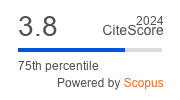Article | Open Access
“Arctic-tecture”: Teaching Sustainable Urban Planning and Architecture for Ordinary Arctic Cities
| Views: | 1657 | | | Downloads: | 901 |
Abstract: Arctic cities are often perceived as exceptional and uniquely challenged by extreme conditions, leading to their treatment as special cases in urban planning and development. However, this perception overlooks the reality that Arctic cities share similar issues common to many small and medium-sized urban centers globally, such as mobility, climate adaptation, and aging populations. By recognizing Arctic cities as ordinary cities, we can better address their needs and foster effective solutions. This article reflects on the results of a fourth-year Master-level course in Sustainable Urban Development, where students researched urban sustainability aspects (e.g., mobility, green infrastructure, energy, public spaces) in northern regions of Finland, Sweden, and Norway. It analyzes pedagogical approaches, highlighting challenges in integrating sustainability perspectives into architecture and planning curricula. Findings hold relevance for educators seeking to address similar challenges in the Arctic or other ordinary cities worldwide, contributing to more resilient and sustainable urban development across diverse environments.
Keywords: architecture education; Arctic cities; pedagogical approaches; sustainable urban development; urban planning
Published:
© Jing Ma, Agatino Rizzo. This is an open access article distributed under the terms of the Creative Commons Attribution 4.0 license (http://creativecommons.org/licenses/by/4.0), which permits any use, distribution, and reproduction of the work without further permission provided the original author(s) and source are credited.


